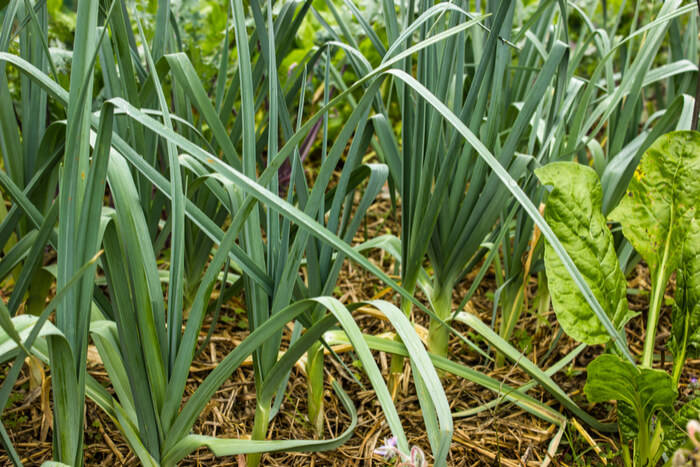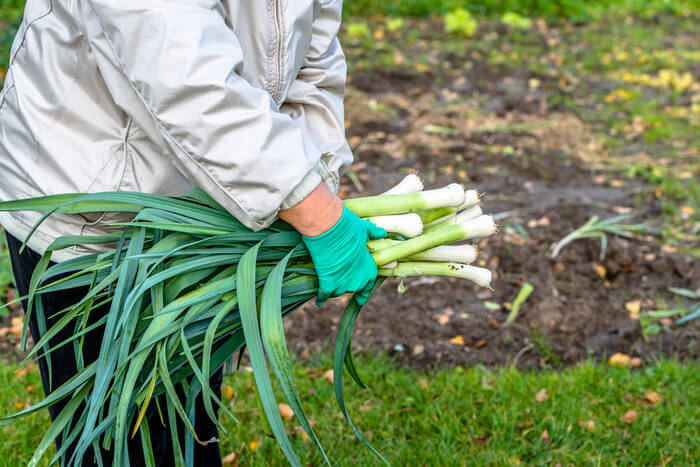Leeks belong to the onion family, and they do well in quiches and soups owing to their mild taste. You can also choose to enjoy them when sauteed. The great thing about them is that they thrive in all climatic conditions. However, if you live in a dry area, you may have to supplement the water supply by watering the plants. You could also choose to grow them in a wooden garden shed where you can regulate the temperatures as well as other essential factors. Check out how to plant leek plants in a few easy steps.

Planting the Seeds
The timing will depend on your climate. However, where you choose to grow these vegetables in your garden shed where you can regulate the conditions, you can do so at any time. The best times to plant leeks are during fall or spring.
Timing Selection
Supposing you live in a mild climate which ranges in the growing zone 7 or higher temperatures, you can start planting the seeds in the fall. In this way, you can harvest the leeks during the spring. From here, you can plant other leeks towards the end of spring, and you can harvest another bunch during the fall. If you choose to plant the seeds towards the end of the year, they will mature during spring.
If you live in an area where the winters tend to be harsh, the best time to plant the seeds would be toward the start of spring. Once the ground is workable, you can get started on preparing it for the seeds.
You should note that there are different leek varieties and some take longer to grow than others. Also, their suitable planting times will vary, and it is thus essential to engage an expert who can help you make the right selection based on your locality.

Site Selection
You will need to fill a seed tray with a seed starting mix. Some people use potting soil, but this is not an advisable option. Seeds do best in warm and sunny locations, and the area you choose to have the seedbed will depend on the time of the year. With temperatures ranging from twenty-five degrees Celsius, the seeds should germinate with ease, provided that the soil is fertile, airy and moist. If the weather is cold, you can start the seeds in your garden shed where you can regulate the heat. Where you choose to plant the seeds in the fall, you can choose a sunny area such as towards the western side of your wooden shed.
The starting mix must be moist as this will guarantee success in germination. If you wish to move directly to planting the seeds in the ground as opposed to having them in trays, you can do so. All you would need to do is to prepare a bed with lots of compost before placing the seeds half an inch into the earth. Ensure that you leave a few inches between the seeds.
Once the seedlings come out, wait for them to reach at least six inches height before transplanting them.
Transplanting Time
The seedlings require a permanent bed where they can grow to full maturity. You can choose to have this indoors near a southern facing window, or you can have it outside in a sunny spot. You should ensure that the soil in the bed is well-drained, especially where you plan on having the leeks in your wooden shed.

Start by working compost into the bed to a depth of at least twenty centimeters. From here, create a trench that is at least fifteen centimeters deep. It is essential for the seedlings to be deep in the soil. Failure to do this will expose the base of the stem to the sun, and it will thus not have the blanched appearance that is characteristic of leeks.
Aftercare
The seedlings should be at least six inches apart to avoid competition over nutrients. Finish up by patting the soil around the base of the leak. You need to cover the roots up to the point where the leaves start spreading apart. Creating a mound around the stem is an easy way to do this. If you wish, you can achieve the same results by having cardboard pieces lie on each plant such that the base remains covered. This method works in not only keeping the leaves clean, but it also protects the stem from the sun.
Mulching is a step that you cannot skip if you wish to have large leeks. Their roots tend to be shallow and are thus at risk of losing their moisture upon exposure to the sun. Once you finish watering the seedling bed, follow up with mulching using a suitable material such as straw. The mulch that you lay should be sufficient to last throughout the growing season until the leeks mature. An inch or so of the same will do.

Ensure that you follow a strict watering schedule. If the leeks are outdoors, you may not have to water them as much as they can rely on water from the rain. However, where you have them indoors, you need to check the soil frequently to gauge the need for watering. Twice a week should do the trick. When watering the seedlings, ensure that you keep the soil moist but not wet.
As the leeks continue to grow, keep hilling their bases such that the soil reaches the part where the leaves begin to spread. The bigger the hill, the more edible part of the plant you will harvest. However, be sure to exercise caution when doing this as too much can lead to rotting. One or two times after the transplanting should be enough.
One last thing about leeks is that they require frequent weeding. Their roots are shallow, and the presence of weeds would thus result in competition over nutrients, thus reducing the size of the edible part. As you water the plants, you can look underneath the mulch for any signs of weeds which you should pluck out by hand.
Harvesting
Once the stems are at least an inch wide, you can start harvesting the leeks. However, there is no restriction as to when you can start enjoying your produce as long as you harvest the leeks before the ground freezes. Supposing you enjoy young stems, you can do the harvesting at a much earlier stage.

Have fun and all the best of luck to you!




